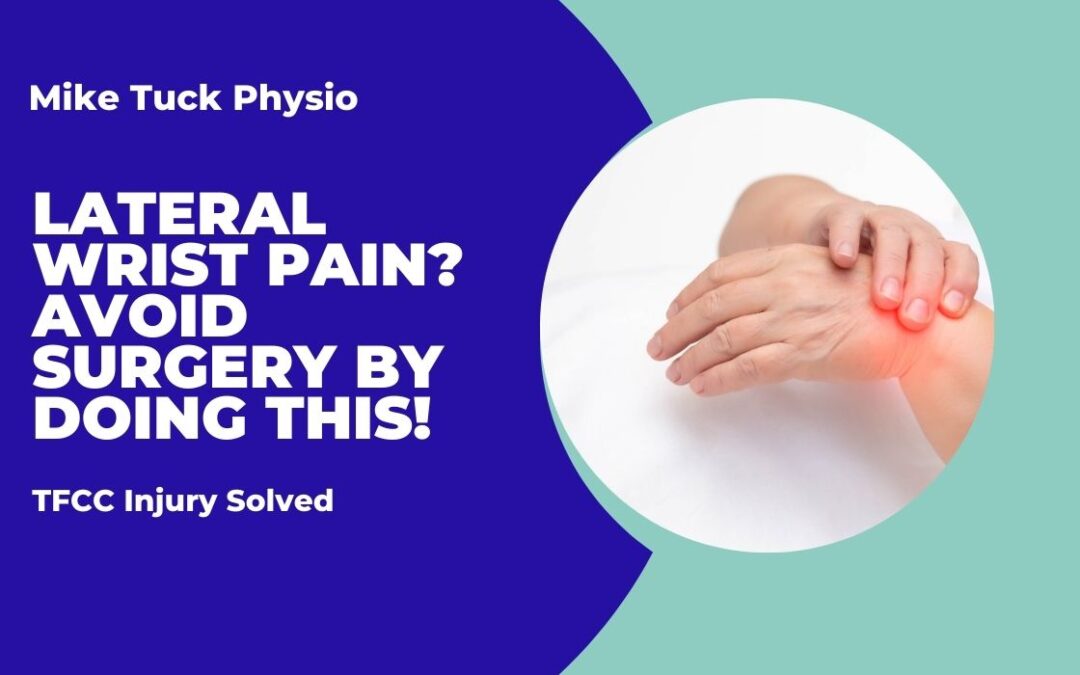Are you experiencing pain on the outside of your wrist when gripping or hitting a golf ball? Do you have swelling on this portion of your wrist? A reduced range of motion? Or even a clicky popping sensation when moving the hand? Do you have a reduced ability to generally lift or grasp objects?
If so, you may have sustained an injury to the TFCC. The Triangular Fibrocartilagenous Complex. This is the small band of connective tissue that stabilises the lateral (pinky finger side) of your wrist/hand.

How does it get injured?
It’s a relatively common golfing injury sustained with compressive loading of the lateral (outside) portion of your wrist. For you golfers out there it’s usually your top hand on the golf club – so that’s the left hand for the righties and the right hand for the lefties! (But not exclusively).
The compressive loading can occur during the strike of the golf ball. I see this a lot with golfers practising at the range hitting off mats or when hitting the golf ball off dry firm ground.
This injury isn’t the sole domain of the golfer however. You can also injure the TFCC by falling onto the outstretched hand, impaction wrist injuries and other forced extension of the wrist situations. These will then create pain when gripping and moving the wrist in all directions, particularly under load but if the pain is significant it could also be sore at rest initially.
You can also sustain an secondary form of TFCC injury through some arthritic conditions or ageing.
Most TFCC injuries are managed conservatively and here’s how to do it to recover in the quickest amount of time!
Management
Stage 1 – Pain and Swelling Management
If you’ve sustained this injury or had this pain for the last week use the following procedure:
- Protect
- Ice
- Brace
Protect – This simply means limiting or stopping the activities that generate the pain.
Ice – For 10 minutes at a time and particularly when expriencing pain

Brace – Wearing a wrist support for a short period to enable the TFCC to recover
The initial pain and swelling could last from a few days up to 6 weeks.
During this initial phase whilst you are managing the pain, it’s important to keep the wrist moving! We don’t want to let the wrist get stiff during this phase of recovery.
Movement Exercises
During this phase try to limit the amount of wrist movement side to side and to a certain extent up and down if it is painful to perform these movements.
Try some of these exercises during this phase:
- Finger Opposition
- Finger flexor tendon gliding
- Fixed wrist bicep curls
Stage 2 – Mobilisation
Once the pain and swelling has settled significantly we need to get that wrist moving again! It’s during this next phase that we start to get the wrist moving through a fuller range of motion.
Try some of these exercises during this phase:
- Ulna Deviation
- Radial Deviation
- Flexion
- Extension
During this early mobilisation stage I would still advise AGAINST actively stretching into pronation (palm down) and supination (palm up) for a little longer (approximately 1-2 weeks). Once your mobilisation exercises are pain free or can be completed with minimal discomfort, you can start these movements again.
I like my patients to start doing some gentle massage at this stage. Please note this shouldn’t increase your pain! Start with some gentle cross friction massage with your thumb of the opposite hand. Start with 30 seconds and build up from there. Up to 2-3 minutes maximum. If it’s sore when massaging go back to just performing the gentle mobility exercises.
Stage 3 – Progress strengthening
- Flexion
- Extension
- Ulna Deviation
- Radial Deviation
And once wrist pain has gone add in strengthening work for:
- Pronation
- Supination
I like the using a hammer in order to facilitate this.
As an additional strengthening aspect let’s add in:
- Grip Strength Training
Conclusion
TFCC injuries can be painful and very tricky to manage.
The above regime has helped 100’s of my patients and in can help you too. It’s helped many people in advanced stage TFCC injury where corticosone injections and surgery have been planned but then subsequently cancelled through effective implementations of this strategy.
Remember to get this looked at by a health care professional if you don’t seem to be making progress. This is essential in order to conform the diagnosis and to provide specific support if required.
If you’d like to see me in person or via zoom you can reach me here http://www.mtphysioclinic.co.uk
Good luck!
If you have any comments or questions please feel free to leave me a comment or subscribe to my Tribe for future information on all things physio, injury and golf!
